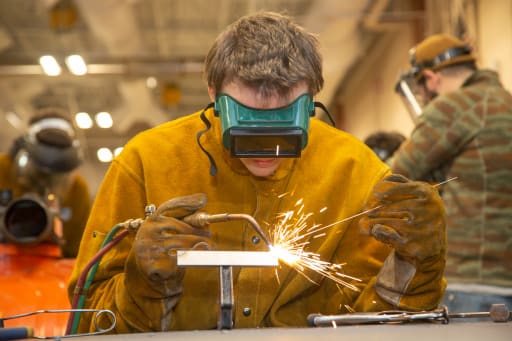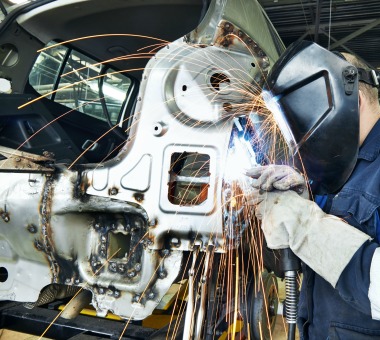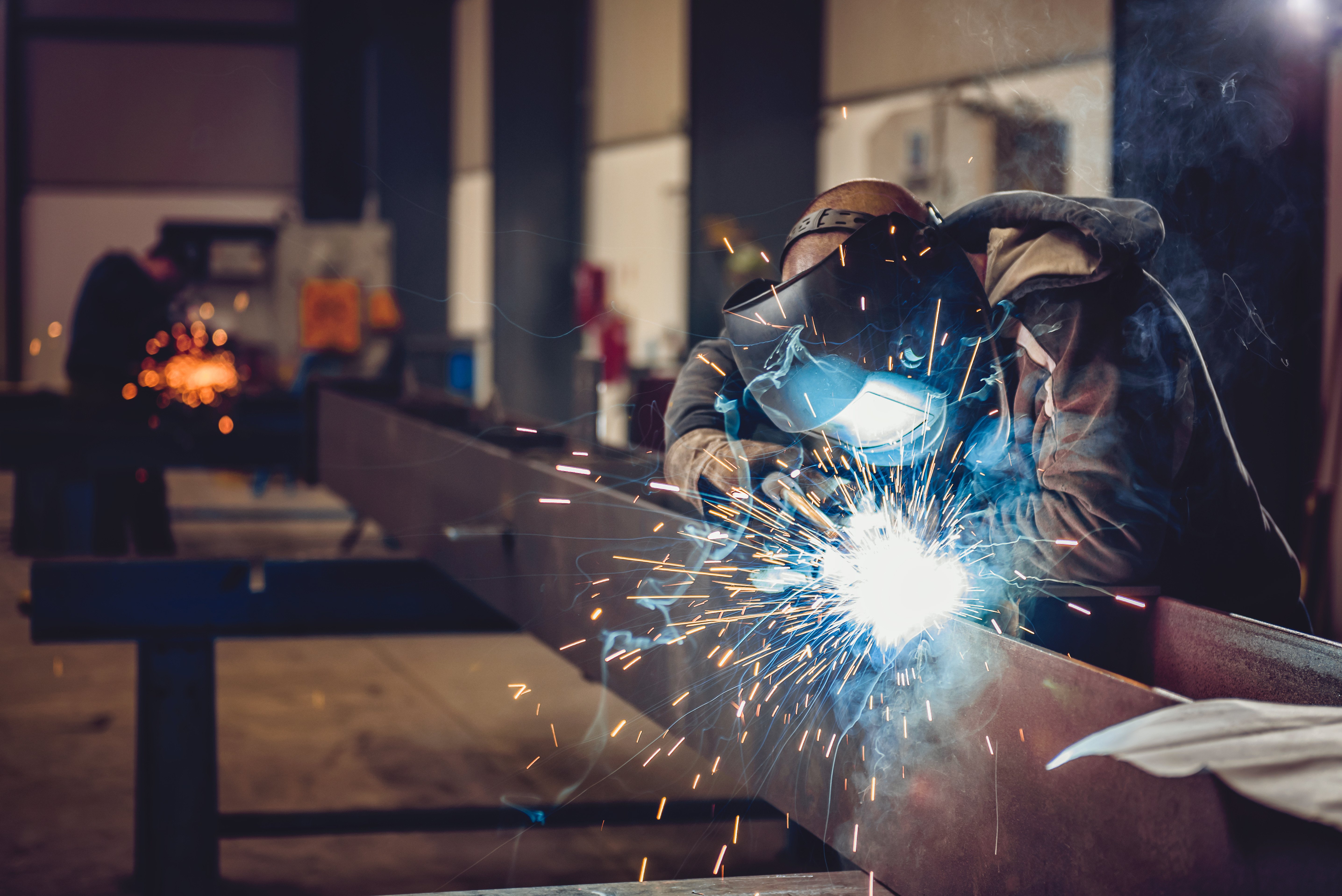Reliable fixes for poor fusion from Montana Mobile Welding and Repair
Typical Welding Fixing Issues and Exactly How to Address Them Properly
Welding repair work frequently encounter a variety of problems that can jeopardize the stability of the last item. Typical troubles consist of insufficient penetration, porosity, and imbalance, among others. Each problem presents special difficulties that call for certain approaches for resolution. Understanding these issues is vital for welders intending to improve their skills and results. This conversation will explore these typical welding repair service concerns and efficient methods to resolve them.
Insufficient Penetration
Poor penetration happens when the weld steel stops working to totally fuse with the base product, resulting in weak joints and possible structural failures. This issue typically comes from not enough warm input, inaccurate electrode angle, or incorrect welding speed. Welders may experience insufficient penetration as a result of a miscalculation of the required specifications for a specific material thickness or type. In addition, contamination on the base material's surface can prevent reliable bonding, aggravating the problem. To deal with inadequate infiltration, welders should ensure suitable settings on their devices and preserve a tidy work surface. Routine evaluation of welds is suggested to identify any deficiencies early, enabling timely improvements and the avoidance of jeopardized architectural integrity in welded settings up.
Porosity
Porosity is an usual issue in welded joints that materializes as little gas bubbles trapped within the weld steel. This problem can jeopardize the stability of the weld, resulting in reduced strength and potential failure under anxiety. Montana Mobile Welding and Repair Fabrication. Porosity generally occurs from contamination, moisture, or inappropriate welding methods, which allow gases to run away right into the molten weld swimming pool. To deal with porosity, welders must ensure correct surface prep work, maintain a tidy workplace, and make use of ideal welding criteria. Furthermore, picking the appropriate filler product and protecting gas can mitigate gas entrapment. Routine inspection and screening of welds can assist determine porosity early, assuring prompt corrective activities are taken, thereby protecting the top quality and reliability of the bonded structure
Imbalance
Imbalance in welding can arise from different factors, including incorrect configuration and thermal development. Recognizing the origin creates is necessary for reliable resolution. Numerous correction techniques are available to straighten components and guarantee structural honesty.
Sources of Misalignment
Welding misalignment frequently comes from a selection of underlying issues that can jeopardize structural integrity. One primary cause is improper fit-up of components before welding, which can result in gaps and unequal surfaces. Variations in thermal development throughout the welding procedure can also lead to distortion, especially if the materials being signed up with have various coefficients of development. Furthermore, insufficient securing and fixturing may fall short to hold components safely in location, leading to motion during welding. Poorly maintained tools, including welding equipments and tools, may present variances in the weld grain, additional adding to misalignment. Driver mistake, stemming from inadequate training or experience, can additionally play a substantial duty in developing misaligned welds.

Correction Techniques Readily Available
Addressing misalignment successfully needs a mix of restorative techniques customized to the details problems handy. One typical approach is making use of fixtures or jigs to hold parts in the right setting during welding, making certain constant positioning. Furthermore, preheating the materials can assist lower distortion and boost fit-up. For significant misalignment, mechanical realignment methods, such as using hydraulic jacks or clamps, can be utilized to remedy the placement prior to welding. Post-weld warmth therapy might also be required to relieve tensions created by misalignment. Mindful examination and modification during the configuration phase can avoid misalignment issues from becoming considerable issues, advertising a smoother welding procedure and enhancing general structural honesty.
Distortion
Distortion is a common challenge in welding that can occur from various elements, consisting of uneven heating & cooling. Understanding the sources of distortion is essential for applying efficient prevention methods. Resolving this problem not only improves structural honesty however also improves the general top quality of the weld.
Reasons for Distortion
When subjected to the intense heat of welding, materials often undertake modifications that can lead to distortion. This sensation mainly arises from thermal expansion and tightening during the welding process. As the weld location heats up, the material increases; upon air conditioning, it gets, which can create internal tensions. Furthermore, irregular heating across a workpiece can intensify these tensions, causing warping or bending. The kind of material additionally plays a considerable duty; metals with differing thermal conductivity and coefficients of expansion might react in different ways, bring about unforeseeable distortions. Furthermore, inadequate joint design and inadequate fixturing can contribute to misalignment throughout welding, increasing the likelihood of distortion. Recognizing these reasons is vital for efficient welding repair and avoidance strategies.
Avoidance Techniques
Reliable prevention methods for distortion throughout welding emphasis on regulating heat input and ensuring correct joint layout. Keeping a regular heat input assists to reduce thermal expansion and contraction, which can result in distortion. Utilizing methods such as pre-heating the workpiece check here can likewise lower the temperature level slope, advertising consistent heating. Additionally, picking appropriate joint designs, such as T-joints or lap joints, can enhance security and lower stress and anxiety focus. Applying appropriate fixturing to secure the work surfaces in position even more aids in keeping placement throughout the welding procedure. Staggered welding series can distribute heat more equally, preventing localized distortion. By using these methods, welders can significantly reduce the chance of distortion and improve the overall top quality of their welds.
Splitting
Fracturing is a typical concern come across in welding fixings, commonly resulting from different elements such as incorrect air conditioning prices, material selection, or poor joint prep work. The incident of cracks can substantially endanger the integrity of the weld, causing potential failures during operation. To resolve this concern, welders need to initially evaluate the root triggers, making certain that products work and suitably picked for the particular application. In addition, regulating the cooling price throughout the welding procedure is necessary; rapid air conditioning can induce stress and anxiety and bring about cracking. Proper joint style and prep work additionally add to minimizing the threat. Carrying out these methods can enhance weld top quality and sturdiness, eventually minimizing the possibility of cracking in ended up weldments.

Incomplete Fusion
A significant problem in welding repair work is insufficient blend, which occurs when the weld metal does not appropriately bond with the base material or previous weld passes - Fabrication. This issue can result in weaknesses in the joint, possibly jeopardizing the honesty of the bonded structure. Elements adding to incomplete combination include not enough warmth input, improper welding technique, and contamination of the surface areas being signed up with. To address this concern successfully, welders must assure proper pre-weld cleaning and surface area prep work, along with readjust their welding specifications to attain adequate infiltration and blend. Routine assessment during the welding process can additionally help identify insufficient blend early, permitting prompt restorative procedures to improve the total top quality of the weld
Overheating
While welding fixings can boost structural stability, overheating offers a substantial difficulty that can bring about material degradation. Excessive warm during welding can change the mechanical properties of metals, causing decreased toughness, increased brittleness, and bending. This sensation is specifically important in high-stress applications where structural integrity is paramount. Determining overheating can entail visual inspections for staining or distortion, as well as monitoring temperature throughout the welding process. To minimize the threats connected with getting too hot, welders ought to utilize appropriate methods, such as controlling warmth input, adjusting traveling speed, and making use of suitable filler materials. Furthermore, executing pre- and post-weld warmth therapies can help restore material residential or commercial properties and boost the general top quality of the fixing, guaranteeing long-term performance and safety and security.
Frequently Asked Inquiries
What Are the Common Indications of a Welding Defect?

How Can I Test My Welds for Top quality?
To test welds for top quality, one can utilize visual assessments, ultrasonic testing, and radiographic approaches. Each strategy guarantees architectural integrity, recognizes issues, and confirms adherence to defined criteria, inevitably enhancing the integrity of the bonded joints.
What Safety Precautions Should I Take While Welding?
When welding, one need to focus on safety by using ideal individual safety equipment, making sure proper air flow, securing flammable products away, maintaining a tidy work area, and recognizing surroundings to avoid injuries and crashes.
Can I Repair a Weld Without Redoing the Entire Joint?
Fixing a weld without remodeling the entire joint is feasible, depending upon the damages (Montana Mobile Welding and Repair Welding). Techniques such as grinding, adding filler material, or utilizing a welding process can properly resolve certain problems while protecting the surrounding framework
What Tools Are Necessary for Efficient Welding Repairs?
Vital devices for reliable welding repair work include a welding machine, wire brush, grinder, safety equipment, clamps, and filler products. Each device plays an important function in making sure top quality and security during the repair procedure. Porosity normally occurs from contamination, wetness, or incorrect welding techniques, which permit gases to run away into the molten weld pool. Poorly kept equipment, consisting of welding machines and devices, might introduce inconsistencies in the weld grain, additional adding to misalignment. When subjected to the intense heat of welding, products commonly undergo modifications that can lead to distortion. Fracturing is a typical problem experienced in welding repair work, frequently resulting from different elements such as inappropriate air conditioning rates, material option, or poor joint prep work. A significant concern in welding repair services is incomplete blend, which takes place when the weld metal does not appropriately bond with the base material or previous weld passes.